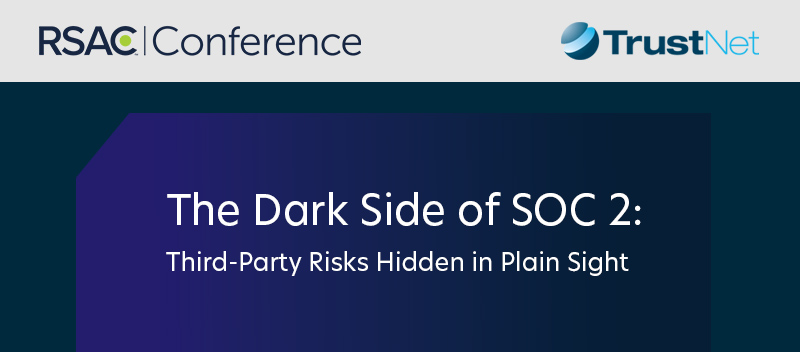Navigating Compliance: PCI DSS v4.0.1 and Beyond

TL;DR
PCI DSS v4.0.1 is now the definitive security standard for any organization that handles cardholder data. With enforcement starting March 31, 2025, this whitepaper breaks down key changes, including risk-based controls, stricter MFA rules, and scope validation, offering a clear, actionable roadmap for compliance.
The Payment Card Industry Data Security Standard (PCI DSS) is a globally recognized benchmark for securing payment card data and protecting against fraud. Maintained by the PCI Security Standards Council (PCI SSC), the standard applies to all entities that store, process, or transmit cardholder information. For CISOs, compliance officers, and IT leaders, PCI DSS compliance is essential to reducing risk, maintaining trust, and meeting regulatory expectations.
In March 2022, the PCI SSC introduced PCI DSS version 4.0, a major update designed to address evolving threats, technologies, and security practices. In 2024, the Council released PCI DSS v4.0.1, a limited revision that clarified certain requirements and corrected formatting or typographical issues, without adding or removing any core controls.
While version 4.0.1 began as a “best practice” reference, full compliance became mandatory for all organizations in scope on March 31, 2025, regardless of their audit cycle.
This whitepaper provides an actionable, plain-language roadmap through PCI DSS 4.0.1 compliance and beyond.
What is PCI DSS?
PCI DSS stands for Payment Card Industry Data Security Standard. It is a global framework of security requirements designed to protect cardholder data from breaches, fraud, and misuse.
The PCI SSC, founded in 2006 by American Express, Discover, JCB, Mastercard, and Visa, develops and maintains the PCI DSS. The Council does not enforce compliance directly but provides the standards that acquiring banks, payment brands, and regulators may require organizations to follow.
PCI DSS Meaning and Purpose
PCI DSS exists to secure the lifecycle of cardholder data. It provides a baseline for managing risk across digital and physical payment environments.
The standard outlines 12 core requirements grouped under six overarching goals, such as building secure networks, protecting stored data, and regularly testing security systems. These requirements apply whether an organization processes payments in person, online, or through third-party platforms.
Who Must Comply?
The following entities must comply with PCI DSS if they handle cardholder data:
- Merchants – from small online retailers to enterprise-level e-commerce platforms
- Payment processors and gateways – facilitating card transactions on behalf of merchants
- Any organization that stores, processes, or transmits cardholder data
Compliance is not optional. Non-compliance can result in data breaches, regulatory fines, reputational damage, and termination of merchant services.
Understanding PCI DSS and why it exists lays the foundation for implementing it effectively.
Ready to Simplify PCI DSS 4.0.1 Compliance? TrustNet’s expert PCI Qualified Security Assessors (QSAs) help you navigate complex requirements, reduce risk, and accelerate your path to certification.
PCI DSS 4.0.1: What’s New and Why It Matters
The release of PCI DSS version 4.0 marked a significant evolution in payment security standards, introducing 64 new requirements to address emerging threats and technologies.
In June 2024, the PCI Security Standards Council published PCI DSS v4.0.1, a limited revision that clarified existing requirements and corrected minor errors without adding or removing any core controls.
As of March 31, 2025, PCI DSS v4.0.1 became the only active version of the standard, officially replacing v4.0. This transition underscores the industry’s commitment to continuous security improvement and adapting to new threats.
Key Enhancements in PCI DSS 4.0.1
Customized Approach to Security Controls
Organizations now have the flexibility to design and implement security controls tailored to their specific environments, provided they meet the defined security objectives. This approach supports innovation and the use of new technologies in achieving compliance.
Integration of Security into Daily Business Processes
PCI DSS 4.0.1 emphasizes embedding security practices into routine operations, promoting a culture of continuous security awareness and proactive risk management.
Enhanced Risk Assessment Requirements
The standard introduces Targeted Risk Analysis (TRA), allowing organizations to assess specific risks associated with particular controls, leading to more informed, flexible and effective security decisions.
Updated Authentication and Password Policies
New requirements mandate multi-factor authentication (MFA) for all access into the Cardholder Data Environment (CDE), not just administrative access. Additionally, password policies now require a minimum length of 12 characters and regular updates to enhance security.
Phased Implementation Deadlines
While many of the new requirements were introduced as best practices, they became mandatory on March 31, 2025, providing organizations with a transition period to achieve compliance.
These enhancements reflect a shift from a compliance-centric approach to one that prioritizes continuous security improvement, ensuring organizations are better equipped to protect payment card data in an ever-evolving threat landscape.
PCI DSS 4.0.1 Requirements: Checklist and Key Focus Areas
Here is a sample checklist highlighting critical PCI DSS 4.0.1 requirements to help you navigate PCI DSS compliance. This list covers core areas but may not include every control your organization needs. Always consult the full PCI DSS documentation or a qualified assessor for a complete compliance strategy.
PCI DSS 4.0.1 Sample Compliance Checklist
1. Install and maintain network security controls
Deploy firewalls, segmentation, and other measures to protect cardholder data.
2. Apply secure configurations to all system components
Harden operating systems, micro services, applications, and devices to reduce vulnerabilities.
3. Protect stored cardholder data with strong cryptography
Use encryption, tokenization, or truncation methods to secure Primary Account Numbers (PAN) and sensitive data at rest and in motion.
4. Conduct regular malware scanning and keep your antivirus updated
Continuously monitor for malicious software on all applicable systems.
5. Secure payment pages and perform regular penetration testing
Protect payment channels and scripts against tampering and test systems for vulnerabilities frequently.
6. Implement and enforce multi-factor authentication (MFA) for all access into the Cardholder Data Environment (CDE)
MFA must apply to all users, not only administrators.
7. Enforce updated password policies
Require a minimum of 12 characters, including complexity and rotation as specified.
8. Restrict access based on business need-to-know
Assign roles and responsibilities clearly and document them for every PCI DSS requirement.
9. Log, monitor, and test system and network security regularly
Maintain comprehensive audit trails and proactively review logs for suspicious activity.
10. Support security with robust policies and employee training
Keep policies current, and ensure employees acknowledge and understand their security responsibilities.
11. Perform authenticated internal vulnerability scans
A scanner must be able to log in into system and application as a normal user to perform dipper vulnerability scan to detect hidden risks.
12. Conduct targeted risk analyses for customized security controls and controls provide flexibility
Evaluate specific risks when applying the customized approach and frequently of regular task to PCI DSS controls.
13. Annually confirm PCI DSS scope and document responsibilities with third-party service providers
Maintain clear agreements and evidence of compliance across all partners.
This checklist represents essential focus areas under PCI DSS 4.0.1 but does not replace detailed compliance planning. Partnering with experts like TrustNet can ensure your organization meets all applicable requirements effectively and efficiently.
PCI DSS 4.0.1 Certification and Assessment
Achieving PCI DSS compliance requires selecting the appropriate validation method based on your business type and model and transaction volume. The two primary methods are:
Self-Assessment Questionnaire (SAQ)
Eligibility: Designed for smaller merchants and service providers that process fewer than 6 million Visa transactions annually.
Applicability: Merchants must meet specific criteria to qualify for an SAQ.
Summary of PCI DSS SAQ Types and Applicability
SAQ A
- For card-not-present merchants (e-commerce or mail/telephone-order).
- All payment processing is outsourced to PCI DSS validated third parties.
- No electronic storage, processing, or transmission of account data on merchant systems.
- Not applicable to face-to-face channels or service providers.
SAQ A-EP
- For e-commerce merchants that partially outsource payment processing.
- Merchant website does not receive account data, but it affects the security of the payment page.
- No electronic storage, processing, or transmission of account data on merchant systems.
- Not applicable to face-to-face channels or service providers.
SAQ B
- For merchants using only:
- Imprint machines, and/or
- Standalone, dial-out terminals with no electronic account data storage.
- Not applicable to e-commerce or service providers.
SAQ B-IP
- For merchants using only standalone, PCI-approved PTS POI devices with IP connections to the processor.
- No electronic account data storage.
- Not applicable to e-commerce or service providers.
SAQ C-VT
- For merchants who manually enter payment data one transaction at a time via a virtual terminal.
- Uses a secure, isolated computing device and browser.
- No electronic account data storage.
- Not applicable to e-commerce or service providers.
SAQ C
- For merchants with Internet-connected payment application systems.
- No electronic account data storage.
- Not applicable to e-commerce or service providers.
SAQ P2PE
- For merchants using a validated, PCI-listed Point-to-Point Encryption (P2PE) solution.
- No access to clear-text account data or electronic account data storage.
- Not applicable to e-commerce or service providers.
SAQ SPoC (Software-based PIN Entry on COTS devices)
- For merchants using off-the-shelf mobile devices (e.g. phones or tablets) with a validated SPoC solution.
- No access to clear-text account data or electronic account data storage.
- Not applicable to unattended, MOTO, or e-commerce environments.
- Not applicable to service providers.
SAQ D for Merchants
- For all other merchants not covered by the other SAQ types.
- Not applicable to service providers.
SAQ D for Service Providers
- Only applicable SAQ for service providers eligible to self-assess under payment brand rules.
Report on Compliance (RoC)
Eligibility: Required for organizations processing over 6 million Visa transactions annually or those designated as higher risk by card brands or acquiring banks.
Conducted by: A Qualified Security Assessor Company (QSAC) and Qualified Security Assessor (QSA) certified by the PCI Security Standards Council.
Process:
1. Determine the QSA to perform the assessment.
2. Prepare by reviewing requirements, scope, and controls.
3. Conduct the assessment.
4. Remediate findings if any.
5. Submit the attestation to the attectation requester.
6. Maintain compliance throughout the year.
Even if a merchant uses SAQ eligibility criteria to determine applicable PCI DSS requirements for an assessment documented in a RoC, the merchant is still expected to include PCI DSS Requirement 12.5.2 to document and confirm their PCI DSS scope at least once every 12 months.
Enhanced Assessment Documentation in PCI DSS 4.0.1
PCI DSS 4.0.1 introduces enhanced assessment documentation and validation procedures, emphasizing:
- Thorough documentation of security controls and business processes.
- Stronger focus on risk-based approaches and customized security controls.
- Increased rigor in validating multi-factor authentication, password policies, and vulnerability management.
Continuous Monitoring and Reassessment
Compliance is an ongoing process. Organizations must maintain continuous monitoring, reviews and conduct regular reassessments to adapt to evolving threats and updated PCI DSS requirements. Staying proactive helps ensure sustained protection of payment card data and reduces the risk of breaches.
Common Questions and Misconceptions
What is PCI DSS, and what does it stand for?
A: PCI DSS stands for Payment Card Industry Data Security Standard. It defines security requirements to protect cardholder data across all businesses that handle payment cards.
Who must comply with PCI DSS?
A: Merchants, payment processors, service providers, and any organization that stores, processes, or transmits cardholder data must comply.
Is PCI DSS compliance a one-time event?
A: No. PCI DSS compliance is an ongoing process that requires continuous monitoring, reviews and regular assessments, and updates to security controls.
Does outsourcing payment processing remove all compliance obligations?
A: No. Even if payment processing is outsourced, organizations remain responsible for securing any systems connected to cardholder data and managing third-party compliance.
Does PCI DSS compliance guarantee full cybersecurity?
A: No. PCI DSS sets minimum standards for card data protection, but it should be part of a comprehensive cybersecurity program.
Common Misconceptions:
- “PCI DSS compliance means no risk of data breaches.”
Compliance reduces risk but does not eliminate it. Threats evolve, so continuous security improvement is essential.
- “Small businesses are exempt from PCI DSS.”
All organizations that handle payment cards must comply, regardless of size or transaction volume.
- “Passing an audit means permanent compliance.”
PCI DSS requires yearly certification. Passing an audit once is not enough.
- “Only IT teams are responsible for PCI DSS.”
Compliance involves people, processes, and technology across the entire organization.
Preparing for the Future: PCI DSS Beyond 2025
PCI DSS requirements will continue to evolve. Organizations must act with foresight and discipline to stay compliant and secure.
- Monitor official updates from the PCI Security Standards Council.
- Train staff regularly on updated security practices and evolving compliance regulations.
- Review and update internal policies to reflect current PCI DSS standards.
- Invest in tools that support real-time monitoring, secure authentication, and data protection.
- Build a security-first culture that treats compliance as an ongoing responsibility, not a once-a-year task.
- Ongoing PCI DSS compliance is not just about meeting requirements. It’s about protecting your business, your customers, and your reputation.
Secure the Future with TrustNet
PCI DSS 4.0.1 isn’t a finish line; it’s the new baseline. TrustNet’s QSAs and cutting-edge PCI DSS Compliance solutions can help you build a stronger, smarter compliance program that adapts as threats and requirements change. Start with TrustNet today.
From detailed gap assessments to continuous compliance support, we make sure you’re always audit-ready and secure.
Contact TrustNet today for a free consultation.
Subscribe to the TrustNet Newsletter
actionable cybersecurity strategies, and TrustNet’s cutting-edge solutions.




